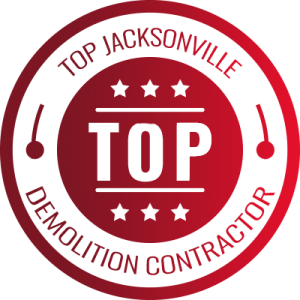



Demolishing commercial buildings is a complex task that requires careful planning and coordination. In Southeast Georgia, this process comes with unique challenges due to local regulations, weather conditions, and environmental considerations. Each step must be handled with precision to avoid costly errors and ensure the safety of everyone involved.
One of the biggest mistakes is skipping a detailed site assessment. Understanding the building’s structure and its surroundings is crucial to anticipate the challenges that may arise. Environmental compliance is another area that requires strict attention. Ignoring these regulations can lead to legal issues and project delays, which are both costly and time-consuming.
Effective planning and project management are vital in steering clear of these pitfalls. From organizing resources to aligning with safety protocols, each aspect contributes to a successful demolition project. This blog will guide you through these common pitfalls and how to avoid them, ensuring your commercial demolition project in Southeast Georgia runs smoothly.
Failing to Conduct Thorough Site Assessments
A thorough site assessment is crucial in any commercial demolition project, especially in Southeast Georgia, where local conditions can affect the process. Understanding the building’s structure is the first step toward a successful demolition. Comprehensive knowledge of how the building is constructed helps in choosing the right demolition techniques and tools. This ensures that the structure is dismantled safely and efficiently with minimal impact on the surrounding area.
Beyond the building itself, assessing the surroundings is equally important. Identifying nearby structures, utilities, and natural features like trees or water bodies helps in planning the demolition without causing unintended damage. Ignoring these aspects can lead to costly repairs and delays.
Early identification of potential hazards is also vital. These can include asbestos, lead-based paint, and unstable structures. Such hazards pose significant risks to both workers and the environment. By spotting these issues early, you can implement the necessary safety measures and plan for their proper handling. This proactive approach can prevent accidents, reduce costs, and ensure compliance with safety regulations, ultimately leading to smoother project execution.
Ignoring Environmental Regulations and Compliance
Ignoring environmental regulations in Southeast Georgia can lead to severe consequences for commercial demolition projects. The region’s unique landscape and ecological requirements demand special attention to compliance, as failing to adhere can result in heavy fines and project stoppages.
Several common pitfalls in environmental compliance include neglecting to obtain necessary permits and not following proper waste disposal procedures. Many demolition sites contain hazardous materials like asbestos and lead that require careful handling to prevent contamination. These materials must be identified and removed by trained professionals according to legal guidelines to protect both the environment and public health.
Effective handling of hazardous materials involves clear steps:
- Inspection and Testing: Conduct thorough inspections to identify any hazardous substances present in the building before demolition.
- Safe Removal: Use appropriate protective gear and techniques to safely extract and contain hazardous materials.
- Documentation: Keep accurate records of all materials handled and disposed of, ensuring compliance with local regulations.
- Licensed Disposal: Ensure that all hazardous waste is disposed of through licensed and certified facilities according to environmental laws.
By addressing these regulations head-on, demolition projects can proceed without legal interruptions, maintaining both safety standards and environmental integrity.
Poor Planning and Project Management
Ineffective planning and project management can derail even the most straightforward commercial demolition projects. Failing to create a detailed plan can lead to delays, increased costs, and safety hazards. Without a structured approach, resources may be misallocated, and essential tasks might be overlooked, complicating the demolition process.
Effective project management starts with setting clear objectives and timelines. Establishing a comprehensive timeline helps to map out every phase of the project and allocate appropriate resources. This also involves assembling a skilled team capable of handling the various challenges that may arise during demolition.
Key steps for effective project planning include:
- Define Scope and Goals: Clearly outline the project’s goals and what success looks like. This provides a roadmap for every team member to follow.
- Resource Allocation: Determine the necessary manpower, equipment, and funding required to meet project milestones.
- Risk Management: Identify potential risks and create contingency plans to address them promptly.
- Regular Monitoring: Schedule regular check-ins to monitor progress, address any arising issues, and adjust plans as needed.
With these elements in place, project execution can proceed smoothly, minimizing disruptions and ensuring safety and compliance throughout the demolition.
Overlooking Safety Protocols and Measures
Safety is a critical component of any demolition project. Overlooking safety measures not only endangers workers but also the public and environment surrounding the site. Establishing rigorous safety protocols is essential to prevent accidents and injuries.
Ensuring a safe work environment begins with comprehensive training. All team members should be well-versed in operating equipment, identifying hazards, and following emergency protocols. Regular safety drills can reinforce these practices and prepare workers for handling unexpected situations.
Strategies to maintain a safe demolition site include:
- Implement Safety Gear: Equip all workers with the necessary protective gear such as helmets, gloves, and eye protection.
- Secure the Perimeter: Clearly mark and secure the demolition site to keep unauthorized personnel out and protect the public.
- Conduct Regular Inspections: Review sites continuously to identify and address potential hazards promptly.
- Emergency Readiness: Keep first aid kits and emergency contacts easily accessible and ensure all workers know the procedures for emergencies.
Adhering to these safety measures allows demolition projects to be conducted efficiently and safely, protecting workers and the surrounding community.
Conclusion
Successfully managing a commercial demolition project in Southeast Georgia requires careful adherence to various elements, from thorough site assessments to effective project management and robust safety measures. Neglecting any of these areas can lead to significant issues that impact not only the project’s timeline and budget but also the safety and compliance aspects crucial to the entire operation. By focusing on these key areas, demolition projects can be executed smoothly with minimal disruptions and risks.
If you’re planning a commercial demolition in Southeast Georgia and want to avoid these common pitfalls, Elev8 Demolition is here to help. Our expertise ensures your project is handled with care, precision, and adherence to all regional regulations and safety protocols. Reach out to us today to learn more about how we can support your next project with our specialized demolition services.

